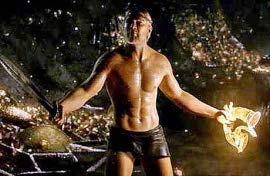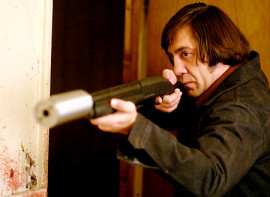 BEOWULF
BEOWULF
In 1977's Annie Hall, there's a scene between Woody Allen's Alvy Singer and Diane Keaton's Annie in which the title character mulls over her adult-education options:
ANNIE: Does this sound like a good course - "Modern American Poetry"? Or, let's see now ... maybe I should take "Introduction to the Novel."
ALVY: Just don't take any course where they make you read Beowulf.
Thirty years later, I'm not sure I'd want to take a course where they make you see it, either.
 NO COUNTRY FOR OLD MEN
NO COUNTRY FOR OLD MEN